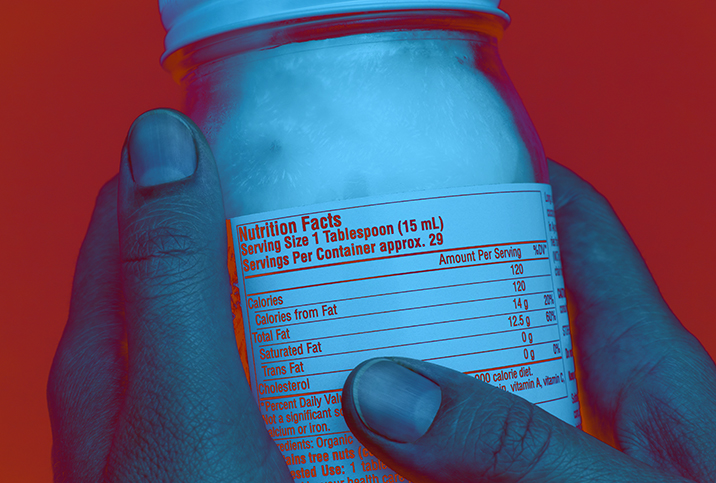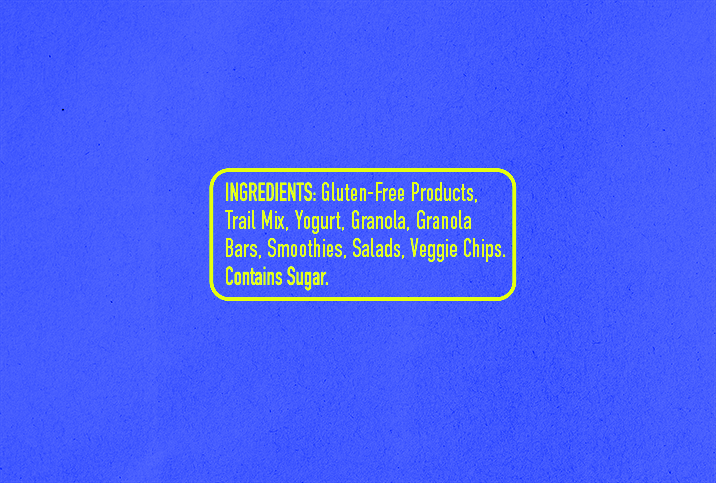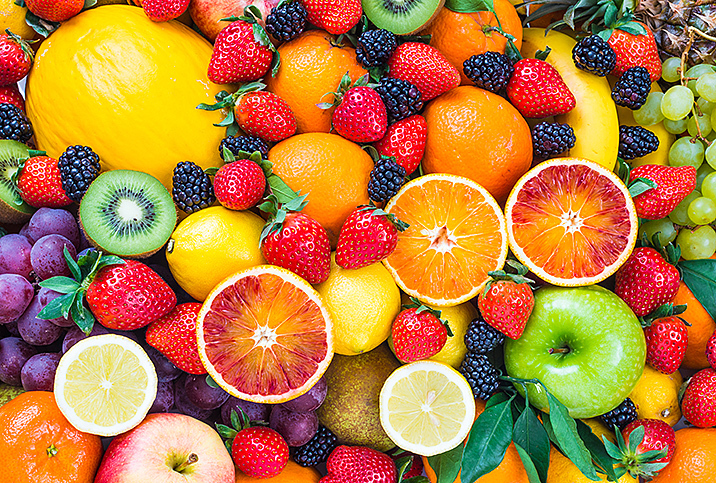Where Does Your Food Come From?

As you're running around the grocery store, anticipating the various menus you're tentatively planning for the week, you're probably not spending too much time wondering where all your ingredients are coming from, besides the shelf. You're even less likely to consider that the choices you make will affect your health and well-being.
Your first guess is right: Most of these foods come from farms. But that's just the beginning of the story, as there are many different farming practices out there, and, nutritionally speaking, each type brings you a different kind of product.
Let's explore each farming practice so you can be the judge.
The difference between farming and agriculture
Generally speaking, agriculture is the cultivation of the ground, the harvesting of crops and the rearing and management of livestock. Farming, on the other hand, represents the business side of agriculture. Most of us are familiar with the concept of conventional and organic farming, but many other variations exist, too.
Conventional farming
The basic concept of conventional farming is its focus on high commercial yield.
It is the most practiced form of farming across the world, with the goal of high production rates. This necessitates the use of chemical fertilizers, pesticides, insecticides and GMOs to increase yield in as short a time as possible. Not only does this practice negatively impact the environment, humans and animals, but it also puts a heavy toll on the soil itself, depleting it of trace minerals (amongst other nutrients) needed for healthy crop growth.
This kind of farming is far from the sentimental, romanticized images you may have internalized. In fact, it's sometimes referred to as intensive agribusiness or industrial farming—not very evocative of red barns and roosters, is it?
Let's take a look back at how it all got started.
"Following World War I, America began a demographic shift from the farm to the city," said Rudolph Ballentine, an M.D. in diet and nutrition. "Factories lured people off the land and began packing them into large urban areas. The food supply began to change in earnest. Government, food and drug regulation was increasingly serving the convenience, cost-effective, long-shelf demands of food processors, regardless of nutritional quality. After generations of whole and unprocessed foods, science was showing business shortcuts. Within one generation, the foods of commerce took over."
While the benefits of conventional farming methods exist for the consumer in the form of lower price points, this can sometimes come at the cost of our health.
Organic farming
The Rodale Institute, a nonprofit that promotes organic farming, states that "the essential difference between organic and conventional farming is that conventional farming relies on chemical intervention to fight pests and weeds and provide plant nutrition. That means synthetic pesticides, herbicides and fertilizers. Organic farming relies on natural principles like biodiversity and composting instead to produce healthy, abundant food."
A 2007 USDA report indicated that modern organic production applies techniques first used by humans thousands of years ago, before chemicals and fertilizers came into play, in ways that are economically viable for modern farmers. The report went on to say, "Organic producers implement a wide range of strategies to develop and maintain biological diversity and replenish soil fertility." What determines a farm as organic? According to the Rodale Institute, such a farm works in harmony with nature without synthetic properties.
The most crucial factor in the increased popularity of organically farmed products is that they're free of harmful chemicals and pesticides, and therefore offer relatively no health risks for consumers. Apart from that, there are many other benefits, such as the promotion of soil biodiversity and sustainability.
When shopping for organic produce, examining it gives consumers important clues as to the condition of the food in question. For instance, vegetables whose stalks are split, or skins cracked, are most likely deficient in some mineral. Those whose coloring is too green might have had large quantities of nitrogen-based fertilizer imposed on them. If leaves are yellowed, there is usually a lack of iron. This helps narrow down the selection.
Alternative farming practices
Farmers aren't limited to conventional and organic farming. The farming practices rapidly gaining in popularity are permaculture, hydroponics, regenerative and biodynamic, to name a few, most of which are offshoots of organic methods.
They, along with organic farming practices, work on the tenets that plant, animal and human health are intricately linked to the soil, food processing, diet and nutrition.
In "Empty Harvest: Understanding the Link Between Our Food, Our Immunity, and Our Planet," authors Bernard Jensen and Mark Anderson wrote, "Soil is a living substance. It contains trace minerals, minerals, enzymes [and] bacteria that are all beneficial to the plant and the humans and animals who feed on it."
Permaculture
If you live on a piece of land, you can practice permaculture. This method's goal is to provide a system for growing food in a way that benefits and works in harmony with the local ecosystem. Its foundational ethics are:
- Caring for the earth by regenerating soil fertility and biodiversity.
- Caring for the people while creating landscapes that produce food.
- Finding ways to use any surplus, such as rainwater and compost.
Permaculture farms are described as organic, low-input and biodiverse. They use techniques such as intercropping (the practice of growing two or more crops in proximity), water harvesting (collecting rainstorm-generated runoff and using it to cultivate crops) and resource recycling.
Hydroponics
Hydroponic farming can be found in commercial settings and is also gaining in popularity with home gardeners, especially with apartment dwellers. It's a type of agriculture or gardening that doesn't use soil. Plants are grown using water, root support like coconut husks or peat moss, nutrients and light.
Erika Benson, founder of land investing company Gokce Capital, warned that even though hydroponics is a wonderful practice, the selection of foods you can produce may be limited.
"There are a few species of plants that grow well in a hydroponic system, like lettuces, leafy greens, herbs, spinach, strawberries, bell peppers and cherry tomatoes, but root and vine vegetables don't do as well, especially potatoes, corn and melons," she explained.
At this time there is controversy as to whether or not to label hydroponic crops as organic. This farming method doesn't use synthetic fertilizers, pesticides, rodenticides, and so on, so in this respect its crops are organic—however, they are not grown in soil.
Regenerative farming
Regenerative farming is the not-so-new kid on the block that's gaining popularity and starting to give organic farming some competition.
The National Resource Defense Council (NRDC) wrote, "Regenerative agriculture is not new; indigenous cultures farmed in harmony with nature centuries ago. Today, regenerative farmers seek to heal the land from degradation and grow healthy food in a way that does not exploit people, animals, and the land."
Farming resource Diálog Chino stated, "Regenerative farmers typically disturb the soil as little as possible. They forgo tillage—the turning and preparation of soil—as it alters the complex network of soil biodiversity, and also avoid using large doses of pesticides. They look to grow a diversity of crops, instead of just monocultures, and believe that grazing animals are vital to the improvement of soil health."
Biodynamic farming
The Biodynamic Association describes this type of farming as "a holistic, ecological and ethical approach to farming, gardening, food and nutrition. Biodynamics is rooted in the work of philosopher and scientist Dr. Rudolf Steiner." The association explains that the principles and practices of biodynamics can be applied anywhere food is grown, with thoughtful adaptation to scale, landscape, climate and culture.
In biodynamic farming, land is viewed as an integrated living organism composed of several elements: the field, plants, animals, people, soil and compost. It treats animals humanely, manages pests and diseases holistically, and builds up the soil with natural products, such as plants grown as a healing balm for the soil and manure from the animals living on the land. This combines to help cultivate biodiversity and supports the integrity and diversity in seeds and breeds.
A simple example of biodynamics can be seen in the use of alternative pest control at vineyards, where rodents often become a considerable challenge to winemakers.
"The mainstream conventional way of killing rodents is to apply rodenticides [which] are really harmful, so using barn owls is definitely the sustainable, eco-friendly way to reduce [the] rodent [population]," said Carrie Wendt, a wildlife biologist. "Barn owls are rodent-devouring machines. Without these owls, the rodent population would explode and cause considerable damage to vineyards. Using owls to reduce the rodent population on vineyards is the alternative way to kill rodents."
Putting it into practice
If you want to start supporting these practices but don't quite know where to start, try any of the following:
- Look for farmer certification.
- Research your local Community Supported Agriculture (CSA).
- Get to know local farmers and how they raise animals or grow produce.
- Learn how to properly read food labels.
To further investigate the certification process of the various farming methods mentioned above, start your research here for regenerative farming certification, biodynamic farming certification (international) and USDA organic certification.
If you own a piece of land, try your hand at permaculture, or even biodynamics. But if you're a city dweller who resides in an apartment, then hydroponics could certainly be an option. You'll know exactly what you're consuming and the small investment could save money in the long run, even something as small as growing your own herbs in the kitchen.
There are many different options to conventional farming. Knowing your choices is paramount to living life on your terms.
L.E. Saba holds credentials as a registered holistic nutritionist, health coach and environmental health specialist. She has written for hospital systems and ghostwritten for practitioners and coaches for nearly 40 years, also compiling educational materials for health coaches and edited books on holistic nutrition and psychological wellness.


















